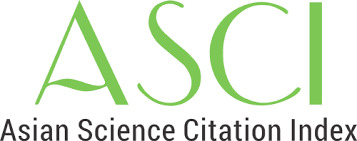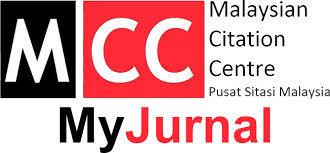HUBUNGAN GAYA KOMUNIKASI GURU BESAR DENGAN KEPUASAN KERJA GURU SEKOLAH RENDAH [THE RELATIONSHIP BETWEEN PRINCIPALS' COMMUNICATION STYLES AND JOB SATISFACTION OF PRIMARY SCHOOL TEACHERS]
Abstract
Abstrak: Kajian ini meneliti hubungan antara gaya komunikasi guru besar dan kepuasan kerja guru di sekolah rendah Zon Ayer Keroh, Melaka. Objektif utama kajian adalah untuk mengenal pasti gaya komunikasi yang diamalkan oleh guru besar, tahap kepuasan kerja guru, serta menentukan hubungan antara kedua-dua pemboleh ubah ini. Kajian ini menggunakan pendekatan kuantitatif dengan melibatkan 181 orang guru sebagai sampel kajian yang dipilih secara rawak mudah. Data dikumpulkan menggunakan soal selidik yang diadaptasi daripada Supervisory Communication Scales (Huseman et al., 1980) dan Job Satisfaction Index (Brayfield dan Rothe, 1951), kemudian dianalisis menggunakan SPSS versi 27. Dapatan kajian menunjukkan bahawa gaya komunikasi guru besar yang paling dominan adalah Arahan Kerja, diikuti dengan Rasional Kerja, Penerangan Kerja, Penglibatan, Maklum Balas, Ekspresi Positif, dan terakhir Ekspresi Negatif. Tahap kepuasan kerja guru berada pada tahap tinggi dengan majoriti responden merasa puas hati dengan pelbagai aspek tugas dan persekitaran kerja mereka. Analisis korelasi Pearson menunjukkan terdapat hubungan yang signifikan antara semua elemen gaya komunikasi guru besar dengan tahap kepuasan kerja guru. Dapatan ini menunjukkan bahawa gaya komunikasi yang berkesan oleh guru besar dapat meningkatkan kepuasan kerja guru. Kajian ini memberi sumbangan penting dalam konteks pendidikan di Malaysia dengan menyediakan data empirikal mengenai hubungan antara gaya komunikasi dan kepuasan kerja dalam kalangan guru sekolah rendah. Hasil kajian ini dapat dijadikan rujukan bagi penyelidik lain serta panduan praktikal bagi guru besar dan pentadbir sekolah untuk memperbaiki gaya komunikasi mereka demi meningkatkan kepuasan kerja guru dan kualiti pendidikan di sekolah.
Abstract: This study examines the relationship between the principal's communication style and teacher job satisfaction in primary schools in the Ayer Keroh Zone, Melaka. The primary objectives of the study are to identify the communication style practiced by the principal, the level of teacher job satisfaction, and to determine the relationship between these two variables. This study uses a quantitative approach involving 181 teachers as the sample, selected through simple random sampling. Data was collected using questionnaires adapted from the Supervisory Communication Scales (Huseman et al., 1980) and the Job Satisfaction Index (Brayfield & Rothe, 1951), and then analyzed using SPSS version 27. The findings indicate that the most dominant communication style of the principal is Work Instruction, followed by Work Rationalization, Work Explanation, Involvement, Feedback, Positive Expression, and lastly, Negative Expression. The level of teacher job satisfaction is high, with the majority of respondents feeling satisfied with various aspects of their tasks and work environment. Pearson correlation analysis shows a significant relationship between all elements of the principal's communication style and teacher job satisfaction. These findings suggest that an effective communication style by the principal can enhance teacher job satisfaction. This study makes a significant contribution to the educational context in Malaysia by providing empirical data on the relationship between communication style and job satisfaction among primary school teachers. The results of this study can serve as a reference for other researchers and as practical guidance for principals and school administrators to improve their communication styles in order to enhance teacher job satisfaction and the quality of education in schools.












